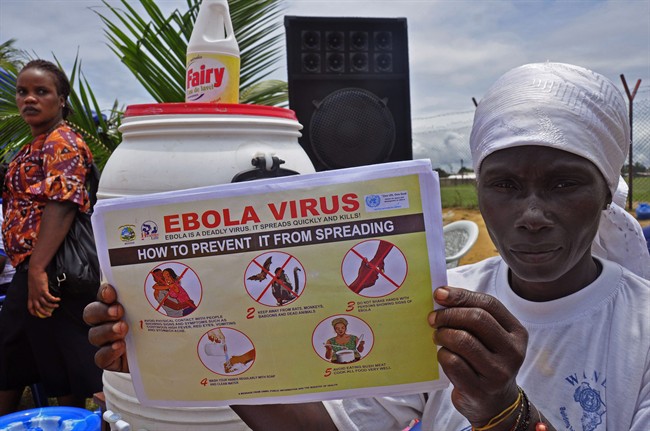If you’ve been following the fast moving Ebola outbreak in West Africa, you may wonder why containing the deadly virus is proving to be so difficult. After all, there have been nearly 20 previous Ebola outbreaks and few have gotten into the triple digits when the final case count is tallied. This outbreak, with over 3,700 cases and nearly 2,000 deaths, exceeds all previous known Ebola cases combined.

An update released Wednesday by the World Health Organization provides a small but enlightening piece of the puzzle of how this virus is wreaking havoc through several countries in West Africa.
This story relates to spread in Nigeria, which experienced a single importation of the virus in late July. It has been hoped Nigeria would be able to stamp out spread of the virus by tracing contacts of cases and putting them into quarantine until it was clear whether they were infected or not.
For a while, it looked like the continent’s most populous country might be able to stop Ebola transmission. It looks considerably less promising now.
Here’s the story:
A man from Liberia named Patrick Sawyer became infected in that country, reportedly while looking after his sister, who died from Ebola. A government official, Sawyer was due to go to an economic conference in Nigeria and did so — even though health officials in Liberia were urging people who were contacts of known cases not to travel.
Sawyer was sick by the time he arrived in Nigeria on July 20 and he died on July 25. Within days of his case being diagnosed, authorities in Nigeria were following 59 people who had had contact with the man. The case count started to grow. A doctor tested positive. Then a nurse, who died.

Get weekly health news
On Aug. 8, Nigeria declared its Ebola outbreak a national emergency. The same day, the WHO declared the West African outbreak a public health emergency of international concern. A month after Sawyer arrived in Nigeria, the country was reporting 15 cases and four deaths, including Sawyer.
Despite the dismaying number of secondary cases from the single importation, Nigerian officials and the WHO still hoped the country’s actions would stop the spread of the virus. But one of the people who contracted the virus from Sawyer decided not to stay put.
The man broke his quarantine order and fled Lagos. He flew to Port Harcourt, in the oil-rich southern part of Nigeria. While there, he was cared for in his hotel room by a local doctor from Aug. 1 to 3.
The man who brought Ebola to Port Harcourt survived his infection. But he infected his doctor, who began to experience symptoms of the illness on Aug. 11. For the next two days, the doctor continued to treat patients — even operating on at least two, the WHO report states.
On Aug. 13, when his condition deteriorated, the doctor stopped practising. He was admitted to hospital on Aug. 16.
While he was sick but before he was hospitalized, the doctor was visited by friends and relatives, some coming to celebrate the birth of a new child. In hospital, he was visited by members of his church, who performed what was described as a healing ritual involving the laying on of hands.
The WHO says that during his stay, the doctor was cared for, at one time or another, by the majority of the hospital’s health-care staff.
The doctor died on Aug. 22. His wife, also a doctor, has since been confirmed as an Ebola case. Another patient in the hospital is also infected. Multiple staff members are being tested for the virus.
More than 200 people who had contact with the doctor are being monitored. Of those, 60 or so are deemed to have had a high or very high risk exposure to the dead doctor.
“Given these multiple high-risk exposure opportunities, the outbreak of Ebola virus disease in Port Harcourt has the potential to grow larger and spread faster than the one in Lagos,” the WHO says.
An emergency operations centre has been activated and a 26-bed isolation facility has been put in place. The WHO’s release says rather ominously that there are plans for possible expansion of the facility.
It also warns that the area is unstable, with civil unrest, security concerns and fear of Ebola creating an environment that could hamstring response operations. “Military escorts are needed for movements into the isolation and treatment centre,” the WHO admits.
Fifteen WHO technical staff are on the ground in Port Harcourt; 21 contact tracing teams are at work. A mobile diagnostic laboratory is in place.
Those numbers speak to an expectation that the Port Harcourt event is likely to generate a whole new wave of cases in Nigeria. So much for early control.
This is how Ebola spreads.








Comments